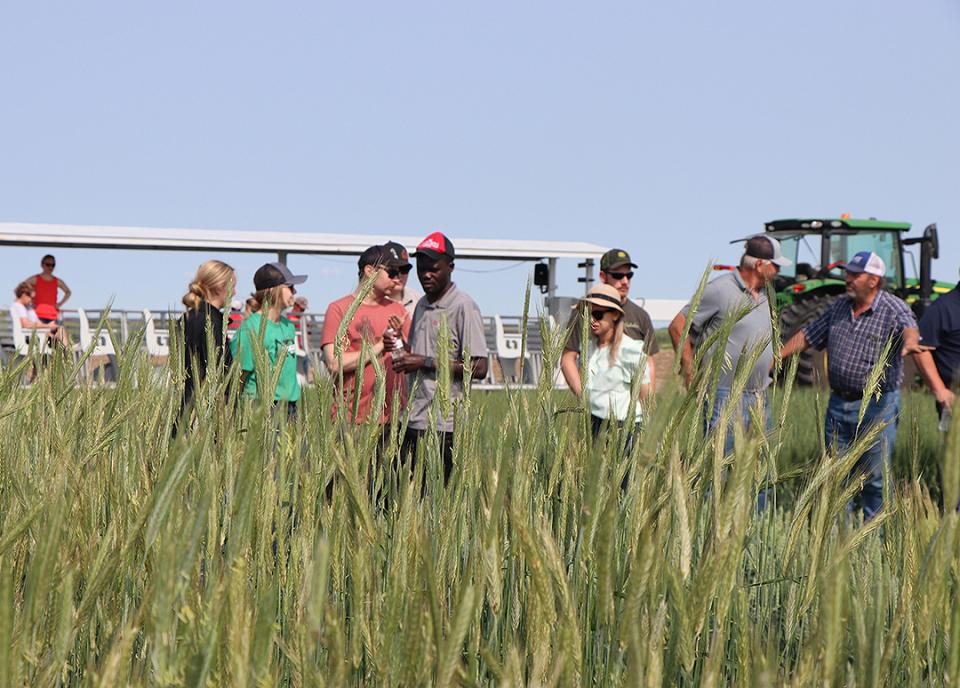
Nebraska Extension Aids Growers with Studies on Wheat Planting Varieties
The hard red winter wheat harvest is in the bins, and now growers are beginning to look at planting for next year’s crop.
Nebraska Extension faculty were at the recent Kriesel Certified Seed event in Gurley, Nebraska, with some information for growers making planting decisions for the winter wheat crop.
“It's a great time to evaluate what varieties have worked for you in the past,” said Katherine Frels, University of Nebraska-Lincoln small grains breeder. “Take a look at the results from the state variety trials and new releases from breeders around the region to really find your next big wheat.”
This year’s weather patterns saw more rain in western Nebraska than typical with cooler temperature, while the rest of the state experienced varying degrees of drought. Even in western Nebraska, the rains were scattered, with hail accompanying thunderstorms. The varying degrees of rain caused challenges for the wheat varieties.
“We didn’t have a lot of consistent winners throughout the whole region as we did some years,” Frels said.
One of the varieties which performed well and surprised Frels and the team at the UNL High Plains Ag Lab in Sidney, was Settler CL, an older variety of wheat.
“It really liked the environment this year,” she said. “But it’s not one we would recommend for a lot of acres anymore as it doesn’t have as high yield potential as some of the new varieties, but it had a fantastic year.”
It’s best for growers to look at averages in the variety trials, where available, because sometimes varieties have an outlier result for a single year like Settler CL did this year. She added growers need to check the areas closest to their soil type and look at multiple years to get an average.
Something else growers need to consider when picking a variety for planting time is to look at the wheat’s disease resistance package. The added moisture this year did cause more Fusarium head blight. While unusual for this area, there was a lot of rain around the time the wheat was flowering.
Disease may be one challenge for growers next year, but wheat stem sawfly is a constant challenge. UNL faculty has been working on the sawfly problem for several years.
The sawfly causes stem damage and lodging in the mature wheat stands, making it harder to harvest, impacting the yield.
“So what we are doing is trying to measure the impact as far as when we have wheat infested with sawfly, are we losing yield, how much, and is it impacting our quality,” said Cody Creech, Nebraska Extension dryland cropping specialist. “That will help us to drive our efforts going forward — to understand where problems are and how to address those problems.”
The group is also looking at the impact wheat stem sawfly has on crops following a wheat crop. In western Nebraska, that is predominately corn. When there is a sawfly infestation, what is the residue degradation and speed, and how does that impact the soil moisture?
“We’re still looking at data from this year, but by winter, we’ll have a better understanding of the impact of sawfly,” Creech said.
Results of numerous 2023 wheat variety trials are now available on CropWatch’s Variety Testing page, with additional results to be posted as data becomes available.
Online Master of Science in Agronomy
With a focus on industry applications and research, the online program is designed with maximum flexibility for today's working professionals.
